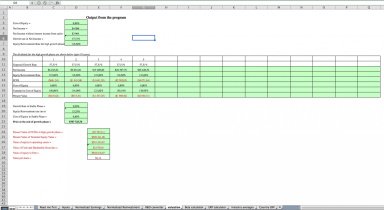
Publication number: ELQ-32847-1
View all versions & Certificate

FCFE (Free Cash Flow to Equity) Valuation Model
A complete FCFE valuation model that allows you to capital R&D and deal with options in the context of a valuation model
Prof. Aswath Damodaran offers you this Best Practice for free!
download for free
Add to bookmarks
Further information
The objective of this model is to get the following output values for a firm:
- Present Value of FCFEs in high growth phase
- Present Value of Terminal Equity Value
- Value of equity in operating assets
- Value of cash and marketable securities
- Value of equity in firm
- Value per share
How it works:
The expected dividends are estimated for the high growth period, using the payout
ratio for the high growth period and the expected growth rate in earnings per share.
The expected growth rate is estimated either using fundamentals:
Expected growth = Retention Ratio * Return on Equity
Alternatively, you can input the expected growth rate.
At the end of the high growth phase, the expected terminal price is estimated using
dividends per share one year after the high growth period, using the growth rate
in stable growth, the payout ratio in stable growth and the cost of equity in stable
growth.
The dividends per share and the terminal price are discounted back to the present at
the cost of equity changes.
If your cost of equity in stable growth is different from your cost of equity in high
growth, the cost of equity in the second half of the stable growth period will be
adjusted gradually from the high growth cost of equity to a stable growth cost of
equity.
INPUTS NEEDED:
1. Length of high growth period
2. Expected growth rate in earnings during the high growth period.
3. Dividend payout ratio during the high growth period.
4. Expected growth rate in earnings during the stable growth period.
5. Expected payout ratio during the stable growth period.
6. Current Earnings per share
7. Inputs for the Cost of Equity










